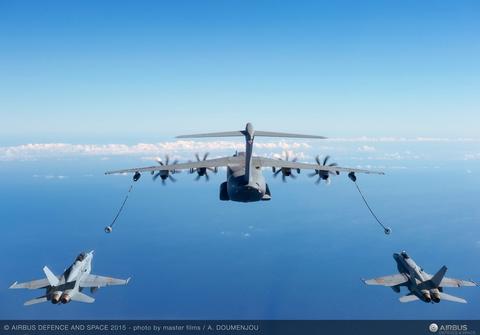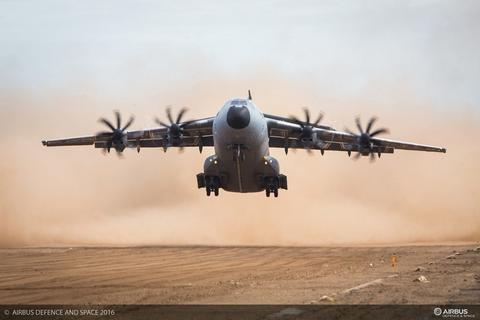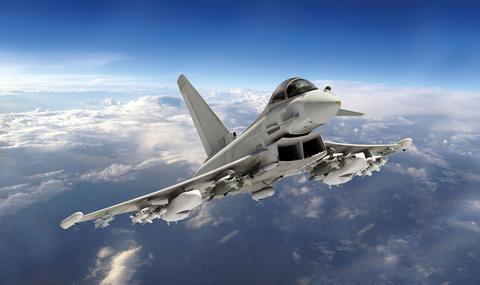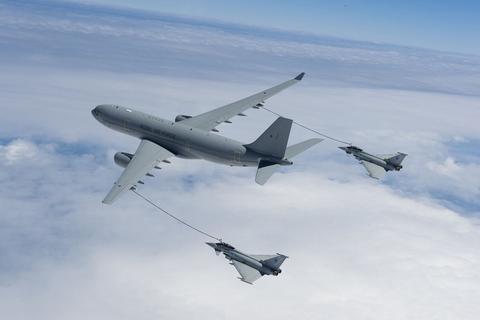Since the 1970s, Airbus has been the supplier of choice for light- and medium-weight airlifters that are in worldwide service with military forces, regional airlines, civilian contractors and other operators.
The product line began with the C-212 Aviocar, developed by Airbus predecessor CASA. After a first flight in 1971, this twin turboprop-powered aircraft was built in a production run of 40+ years, during which more than 470 were assembled in Spain by CASA and under license in Indonesia by the country’s IPTN/Nurtanio aerospace company.
With a maximum take-off weight of 6,500-8,100 kg. and rear ramp-equipped, the unpressurised C212 has been used in the airliner, charter and short-haul cargo roles, for search and rescue missions, in the deployment of skydivers and smokejumpers, and military applications that vary from electronic countermeasure platforms to service with the United States Army’s Special Operations Command.
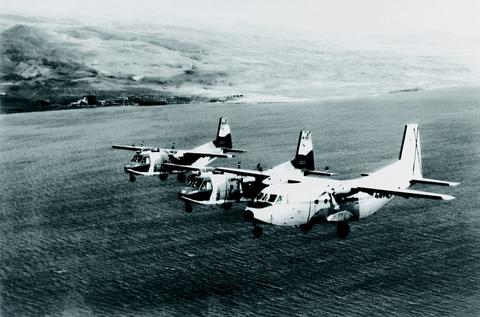
C-212 flying in formation
The durability was underscored by the C212’s deployment by Australian airline Skytraders to support Australia’s science and research efforts in Antarctica and the Southern Ocean.
Stepping up in size, CASA and IPTN began a joint development of the larger CN235 in January 1980, leading to a first flight in November 1983. With active production continuing today at the Airbus industrial facility near Seville, Spain, more than 280 of these pressurised twin turboprop-powered, rear-ramp equipped aircraft have been ordered by military operators, civilian carriers and transport companies, as well as for government and paramilitary operators.
The versatility of this aircraft – which has a maximum take-off weight in the 16,000-kg. category – is demonstrated by the CN235’s diverse applications, covering the spectrum from airline flights, patrol and anti-drug trafficking to cargo, VIP duties and special missions.
The CN235 has even been configured as a gunship with a side-mounted 30mm cannon and integrated weapons pylons for missiles and rockets, while the U.S. Coast Guard acquired CN235s as its medium-range surveillance aircraft in the service’s Integrated Deepwater System Program – with equipment including a roll-on, roll-off electronics suite accommodated through the rear ramp.
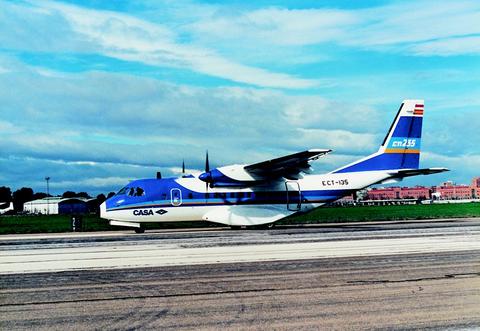
CN-235
Topping off Airbus’ product range in the light- and medium-weight airlifter sector is a stretched CN235 fuselage version, designated the C295, which first flew in 1998. The C295 is equipped with more powerful turboprop engines, and has a maximum take-off weight of approximately 51,145 lbs. Built on the same final assembly line as the CN235, it is a robust and highly versatile platform with an extensive list of configuration possibilities: for intelligence surveillance and reconnaissance (ISR); as a water bomber with a roll-on/roll-off system carrying up to 7,000 litres of water/retardant; in maritime patrol and anti-submarine warfare duties; as an airborne early warning variant with a top-mounted 360-deg. radar dome; along with gunship and aerial tanker versions.
The C295W version is equipped with winglets, giving it the capability to transport more payload over longer distances, with fuel savings of approximately 4% and increased safety margins for hot-and-high conditions, as well as in mountainous regions.
C295s have been acquired by more than 15 countries as its production continues, with major customers including the Spanish, Mexican, Polish and Egyptian air forces. The aircraft also was selected by Canada as a new-generation platform for the Royal Canadian Air Force’s fixed-wing search and rescue duties.
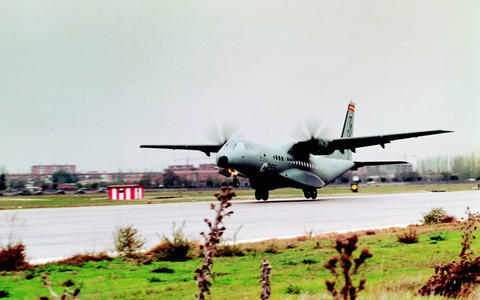
C295
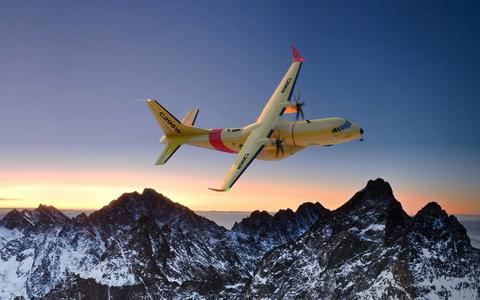
C295W
A400M: one aircraft, three missions
In developing the A400M for tactical and strategic missions – along with force-projection through aerial refuelling – Airbus set the bar high in terms of technical and programme complexity.
Launched in May 2003, with the first flight performed in December 2009, the four-engine A400M responded to the combined needs of seven European nations: Belgium, France, Germany, Luxemburg, Spain, Turkey and the UK; with Malaysia joining in 2005. It features new engines and composite airframe technology.
The A400M’s tactical ability enables the delivery of personnel and goods directly to landings at front-line air bases, on grass and sand strips, and the air drop delivery of paratroopers or pallets. For strategic airlift, it can deliver outsized and heavy vehicles, helicopters, relief equipment and other large payloads with better range, speed and lift performance than previous-generation tactical airlifters. Rounding out its capabilities, the A400M has a tactical air-to-air refuelling capability, able to “top off” probe-equipped receiver aircraft via two underwing hose and drogue refuelling pods as well as a higher-flow centre-line hose and drum unit.
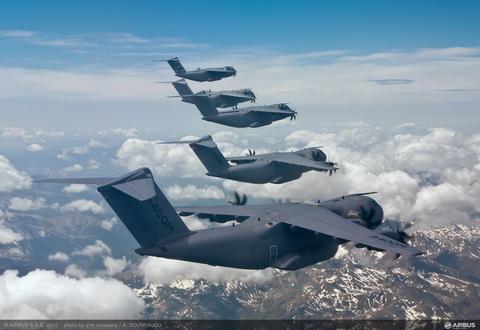
Multiple challenges were encountered during the A400M’s development. Among them were gearbox issues with the Europrop TP400 engines – the largest turboprop powerplants developed for operational use in the West – which limited the aircraft’s operational capabilities, and were treated first with a temporary fix, followed by a permanent solution. Shortfalls in mission performance also were addressed with retrofits and upgrades.
Airbus delivered the first production aircraft in August 2013 to the French Air Force and the A400M entered service the following year. In its ongoing operations, the A400M is living up to its “Atlas” nickname, performing heavy-lift duties during missions ranging from supporting troops in counter-terrorism deployments to the delivery of humanitarian goods and airlifting relief supplies into disaster areas.
A favourite of pilots based on the airlifter’s precise handling thanks to Airbus’ proven fly-by-wire system, the A400M has seen operational use with the French and Turkish Air Forces in Afghanistan, the Central African Republic, African’ Sahel Region, Mali and in the Middle East to support air operations over Iraq and Syria. The UK Royal Air Force’s A400Ms were used for aid deliveries after the Caribbean region’s hurricanes in 2017, and also were deployed in Operation Shader – the UK’s military intervention in Iraq and Syria, as well as to the Middle East in the backing of UK forces around the Arabian Gulf.
